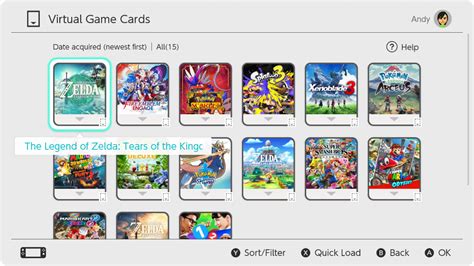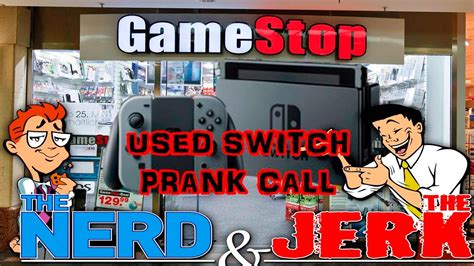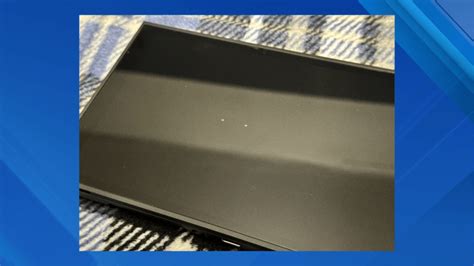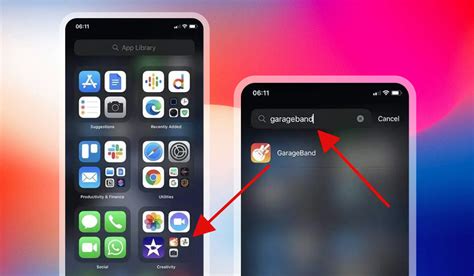
Nintendo’s next console, rumored to be the “Switch 2,” may not abandon physical game media entirely, despite industry trends leaning toward digital distribution, according to insights from Nintendo veterans. While some fans express apprehension about a potential shift to digital-only, industry insiders suggest physical game cartridges will likely continue to have a place in Nintendo’s strategy.
Nintendo’s potential continued support for physical media comes as somewhat of a surprise amidst a broader industry push towards digital downloads and streaming. However, those with experience inside the company suggest Nintendo recognizes the value that physical games offer to its consumer base. “I don’t think physical media is going away anytime soon,” said one former Nintendo employee quoted in the original article. This sentiment reflects a broader understanding that while digital sales are increasing, a significant portion of gamers still prefer the tangible aspect of owning physical copies.
The debate intensified following speculation that the “Switch 2” might follow the path of consoles like the PlayStation 5 Digital Edition and Xbox Series S, which lack disc drives. The prospect of a digital-only Nintendo console has sparked concerns among consumers who value collecting games, reselling titles, and maintaining ownership independent of online accounts.
The Yahoo! Tech article on which this report is based highlights some of the factors potentially influencing Nintendo’s decision. One key point is the cultural significance of physical media in certain markets. For example, in Japan, physical game sales remain strong, and catering to this preference is crucial for Nintendo’s success in its home market.
Furthermore, the availability and reliability of internet infrastructure play a significant role. In regions with limited or unstable internet access, physical game cartridges offer a more reliable means of accessing and playing games. Nintendo must consider these factors when designing its next console to ensure it appeals to a broad global audience.
The economic considerations are also crucial. The cost of manufacturing and distributing physical games is a factor, but so is the potential revenue generated from the resale market. While Nintendo doesn’t directly profit from used game sales, a healthy resale market can increase the perceived value of its products and encourage consumers to invest in the Nintendo ecosystem.
Ultimately, Nintendo’s decision regarding physical media for the “Switch 2” will likely be a strategic balance between embracing digital trends and catering to the preferences of its diverse customer base. The company’s history of innovation and its deep understanding of the gaming market suggest that it will carefully consider all factors before making a final decision.
In-Depth Analysis of Nintendo’s Strategy and the Future of Physical Media
The discussion surrounding whether the Nintendo “Switch 2” will retain physical media capabilities reveals much more than just a simple hardware specification; it underscores a pivotal debate within the gaming industry about accessibility, ownership, and the future of how games are distributed and consumed.
The Consumer Perspective: A Divide Between Digital Convenience and Physical Ownership
Consumers are increasingly divided between the convenience of digital downloads and the tangible satisfaction of owning physical game copies. Digital distribution offers advantages such as immediate access, the elimination of physical storage concerns, and often, competitive pricing through sales and promotions. Digital games can be purchased and downloaded from the comfort of one’s home, eliminating the need to visit retail stores. Furthermore, digital libraries are often tied to user accounts, enabling games to be easily re-downloaded on multiple devices.
However, physical media provides several benefits that digital distribution cannot replicate. The most significant is the sense of ownership. Gamers who purchase physical copies have the ability to resell, lend, or trade their games, which is impossible with digitally purchased titles. This ability to recoup some of the initial cost through resale is a major draw for many consumers, particularly those on a budget.
Another key advantage of physical media is its independence from online services. Once a physical game is purchased, it can be played offline without requiring an internet connection. This is particularly important in regions with unreliable or limited internet access. Moreover, physical games are not subject to the potential risks associated with digital distribution platforms, such as account suspensions or the removal of games from online stores. The preservation aspect is also crucial; physical copies ensure that games can be played for years to come, regardless of whether the digital storefront remains active.
Nintendo’s Strategic Considerations: Balancing Innovation and Tradition
Nintendo has historically taken a unique approach to hardware and software design, often deviating from industry trends to create distinctive and innovative products. The company’s success with the Nintendo Switch, which combines the portability of a handheld console with the functionality of a home console, is a testament to its ability to identify and cater to unmet consumer needs.
When considering the future of physical media on the “Switch 2,” Nintendo must weigh several strategic factors. First, it must assess the preferences of its diverse global customer base. While digital sales are growing, physical game sales remain significant, particularly in key markets such as Japan. Nintendo cannot afford to alienate its loyal fans who prefer physical media.
Second, Nintendo must consider the availability and reliability of internet infrastructure in different regions. In many parts of the world, internet access is still limited or unstable, making physical game cartridges a more reliable option. A digital-only console would effectively exclude these consumers from the Nintendo ecosystem.
Third, Nintendo must evaluate the economic implications of its decision. While manufacturing and distributing physical games incurs costs, a healthy resale market can increase the perceived value of its products. Nintendo may also be wary of ceding too much control to digital distribution platforms, which can impose fees and restrictions that impact profitability.
The Broader Industry Context: A Shift Towards Digital Distribution
The gaming industry is undeniably moving towards digital distribution. Digital game sales have consistently increased over the past decade, driven by factors such as the growth of online gaming, the proliferation of broadband internet access, and the convenience of digital downloads. Major console manufacturers such as Sony and Microsoft have embraced digital distribution, offering digital-only versions of their consoles and investing heavily in online services.
However, the shift towards digital distribution has not been without controversy. Some consumers have expressed concerns about the lack of ownership, the potential for games to be removed from online stores, and the reliance on online services. Others have criticized the pricing of digital games, arguing that they are often more expensive than physical copies.
The debate over digital distribution highlights a fundamental tension between the interests of publishers, developers, and consumers. Publishers and developers often prefer digital distribution because it allows them to bypass retailers, reduce costs, and maintain greater control over their products. However, consumers value the ownership, flexibility, and independence that physical media provides.
Nintendo’s Potential Solutions: A Hybrid Approach
Given the diverse preferences of its customer base and the strategic considerations outlined above, Nintendo is likely to adopt a hybrid approach to physical media on the “Switch 2.” This could involve offering both physical and digital versions of games, as well as providing options for consumers to purchase digital games through a variety of channels.
One possibility is that Nintendo will continue to offer physical game cartridges for its core titles while also expanding its digital offerings through the Nintendo eShop. This would allow consumers to choose the option that best suits their preferences.
Another possibility is that Nintendo will introduce a new type of physical media that combines the benefits of physical and digital distribution. For example, Nintendo could offer game cards that contain a limited amount of storage but also provide access to additional content through online downloads.
Ultimately, Nintendo’s decision regarding physical media for the “Switch 2” will likely be a compromise that balances the needs of its diverse customer base with the realities of the evolving gaming landscape. The company’s history of innovation and its deep understanding of the gaming market suggest that it will carefully consider all factors before making a final decision.
Expert Opinions and Industry Insights
Several industry analysts and experts have weighed in on the debate over physical media on the “Switch 2.” Many believe that Nintendo will continue to support physical game cartridges, albeit in a limited capacity.
“I think Nintendo understands the value of physical media, particularly in certain markets,” said Piers Harding-Rolls, an analyst at Ampere Analysis, in an interview. “They are likely to continue offering physical game cartridges for their core titles, but they may also expand their digital offerings.”
Other experts have suggested that Nintendo could use the “Switch 2” as an opportunity to innovate in the realm of physical media. “Nintendo has always been a company that likes to experiment with new technologies,” said Michael Pachter, an analyst at Wedbush Securities. “I wouldn’t be surprised if they came up with a new type of physical media that combines the benefits of physical and digital distribution.”
The Impact on the Resale Market
The decision regarding physical media on the “Switch 2” will have a significant impact on the resale market for Nintendo games. If Nintendo were to abandon physical game cartridges, the resale market for Nintendo games would likely shrink considerably.
This would have several implications for consumers. First, it would reduce the ability of consumers to recoup some of the initial cost of their games through resale. Second, it would limit the availability of used Nintendo games, which are often more affordable than new games.
However, a decline in the resale market could also benefit Nintendo. By controlling the distribution of its games, Nintendo could potentially increase its profits and exert greater control over its ecosystem.
Conclusion: A Balancing Act for Nintendo
The debate over physical media on the “Switch 2” highlights the complex challenges facing Nintendo as it navigates the evolving gaming landscape. The company must balance the needs of its diverse customer base with the realities of the digital age.
While the industry is undeniably moving towards digital distribution, physical media still offers several benefits that cannot be replicated. Nintendo is likely to adopt a hybrid approach that caters to both physical and digital preferences. The “Switch 2” represents an opportunity for Nintendo to innovate and redefine the future of gaming, while remaining true to its core values.
The final decision on physical media will not only shape the future of the “Switch 2,” but will also influence the broader gaming industry and the way games are consumed for years to come. Nintendo’s move will be watched closely by competitors and consumers alike, as it sets a precedent for how console manufacturers balance innovation with tradition in the digital age.
Frequently Asked Questions (FAQ)
1. Will the Nintendo “Switch 2” be a digital-only console?
Based on insights from Nintendo veterans, it is unlikely that the Nintendo “Switch 2” will be a completely digital-only console. While the gaming industry is shifting towards digital distribution, there are strong indications that Nintendo will continue to support physical game cartridges to cater to consumer preferences and market demands, particularly in regions where physical media is still popular or internet access is limited. “I don’t think physical media is going away anytime soon,” suggests sources familiar with Nintendo’s strategies, reflecting an understanding of the continued value of physical games.
2. Why are some fans concerned about a digital-only “Switch 2”?
Many fans are concerned about a digital-only “Switch 2” due to the perceived loss of ownership and control. With physical games, consumers can resell, lend, or trade their copies, providing a sense of ownership and the ability to recoup some of the initial cost. Digital games, on the other hand, are typically tied to a specific account and cannot be resold or transferred. Additionally, concerns about the long-term availability of digital games on online platforms and the need for a constant internet connection contribute to the apprehension.
3. What are the advantages of Nintendo sticking with physical game cartridges?
There are several advantages to Nintendo continuing to support physical game cartridges. First, it caters to consumers who prefer the tangible aspect of owning physical copies and the ability to resell or lend them. Second, it provides a more reliable means of accessing and playing games in regions with limited or unstable internet access. Third, it helps maintain a healthy resale market, which can increase the perceived value of Nintendo products and encourage consumers to invest in the Nintendo ecosystem. Additionally, the cultural significance of physical media in markets like Japan makes it a crucial factor for Nintendo’s success.
4. How might Nintendo balance digital and physical media on the “Switch 2”?
Nintendo could potentially balance digital and physical media on the “Switch 2” by offering both physical and digital versions of games. They could also continue to offer physical game cartridges for their core titles while expanding their digital offerings through the Nintendo eShop. Another possibility is introducing a new type of physical media that combines the benefits of both formats, such as game cards with limited storage that provide access to additional content through online downloads. A hybrid approach would allow consumers to choose the option that best suits their preferences.
5. How does the potential decision on physical media impact the resale market for Nintendo games?
If Nintendo were to abandon physical game cartridges, the resale market for Nintendo games would likely shrink significantly. This would reduce the ability of consumers to recoup some of the initial cost of their games through resale and limit the availability of used Nintendo games. However, a decline in the resale market could also benefit Nintendo by giving them greater control over the distribution of their games and potentially increasing profits.









